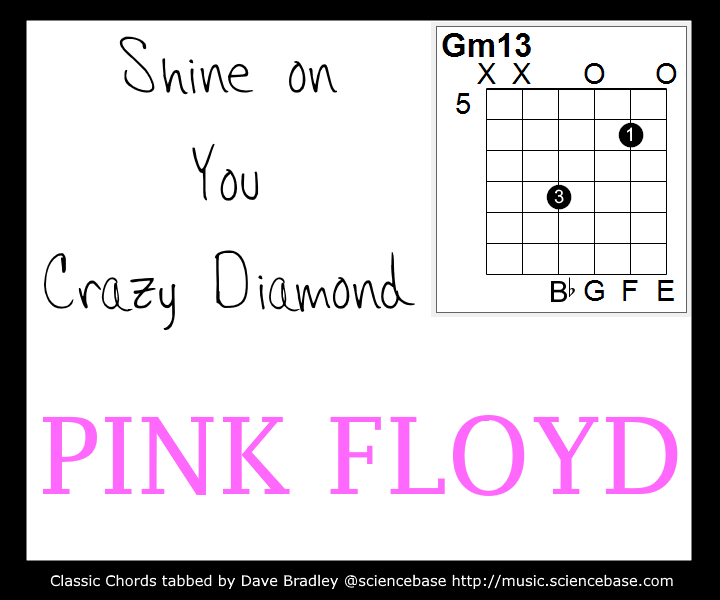TL:DR – The arpeggiated Gm13 guitar chord from Pink Floyd’s Shine on you crazy diamond.
I grew up on Pink Floyd…well I say that, not sure anyone who spends their time obsessing over music and guitar chords has ever really grown up.
Either way, as a teen, I used to obsessively listen to Dark Side of the Moon and worry neurotically about that line “then one day you find, ten years have got behind you” and the one about the lunatic on the grass. Well, I was probably pushing 20 last time I played my taped copy of the album lying in the sun in my parents’ garden, lazing on a sunny afternoon with an acoustic guitar and all that.
That lyric has gone round three times since then and I still haven’t heard the starting gun nor shaken off the urge to lie on the grass in the sun. Anyway, I was going to do the Em(7) and A(sus4) chords from “Breathe” from that album, which you can also hear in Elton John’s Rocket Man but shifted up three,
But, I don’t think those chords are quite as iconic as the arpeggiated G minor 13 (Gm13) that takes us from Rick Wright’s keyboard-led opening of “Shine on You Crazy Diamond” from the Wish You Were Here album, to the heavier next section. So, that’s the one I’ve focused on.









